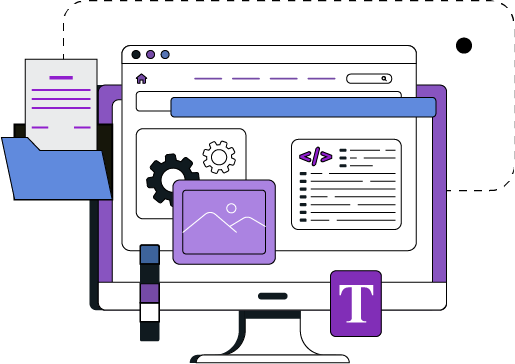Supply Chain Trends for 2025: How Data, AI, and Innovation Are Shaping the Future
Supply chains in 2025 are operating in an environment of rapid disruption and increasing complexity. However, organizations that take advantage of emerging technologies and robust data strategies are already positioning...
On February 10, 2025

Supply chains in 2025 are operating in an environment of rapid disruption and increasing complexity. However, organizations that take advantage of emerging technologies and robust data strategies are already positioning themselves at the forefront of their industries. By examining the trends below, warehouse leaders, supply chain professionals, and logistics teams can gain a clear roadmap of where to invest, how to innovate, and what steps to take to remain competitive. Here are seven major supply chain trends affecting the landscape in 2025.

Supply Chain Trend #1: AI-Driven Predictive Analytics Dominate
Why This Supply Chain Trend Matters
Artificial intelligence (AI) has shifted from a buzzword to an indispensable tool for improving decision-making across warehouse operations. By analyzing massive amounts of real-time data—from inventory to labor workflows—AI helps organizations identify and respond to disruptions before they escalate.
Key Benefits
- Enhanced Forecasting: Predictive analytics enable more precise demand planning, helping to avoid overstocking or stockouts.
- Automated Resource Allocation: AI-powered solutions quickly adjust workforce scheduling, ensuring optimal placement of employees on the floor.
- Saved Labor Hours: Sophisticated algorithms eliminate the need for manual data gathering and analysis, returning valuable time to operations teams.
Pro Tip
The accuracy of AI-driven insights depends on the quality of the underlying data. Inaccurate inputs can result in poor or even harmful decisions, highlighting the need for a clean, unified data foundation.
Never miss a story. Stay updated about Rebus news as it happens.
Supply Chain Trend #2: Tariffs and Evolving Trade Dynamics Redesign Supply Chains
Why This Supply Chain Trend Matters
Fluctuating tariffs and changing trade policies have become more than just occasional headlines; they are reshaping procurement, production, and distribution strategies worldwide. Companies now require greater flexibility to adapt quickly and minimize disruptions.
Key Implications
- Diversified Sourcing: Many organizations are broadening their supplier base to offset the risks of tariff fluctuations.
- Regional Warehousing: The establishment of regional hubs can offset the impact of higher import costs, shortening lead times and transportation routes.
- Data Complexity: Managing multiple new sources and destinations adds to the complexity of data integration, demanding scalable data-management tools.
Pro Tip
Organizations often toggle between just-in-time and just-in-case inventory strategies based on anticipated tariffs. Each approach brings unique challenges in warehouse capacity, cost, and data oversight. But when it comes to the supply chain and politics, it can all change over night.
Supply Chain Trend #3: Reshoring and Nearshoring Accelerate
Why This Supply Chain Trend Matters
Companies are increasingly bringing production closer to home, aiming to reduce transit times and mitigate global trade uncertainties. Reshoring and nearshoring strategies promise greater control, improved responsiveness, and potentially enhanced profitability.
Key Benefits
- Risk Reduction: Localized production minimizes exposure to geo-political disruptions and trade barriers.
- Job Creation: Establishing facilities closer to the end consumer often leads to local economic benefits.
- Lead Time Improvements: Shorter distances mean faster deliveries and the opportunity for more flexible order management.
Data Challenge
Expanding into new regions or relocating production and storage sites increases the volume of data streams. Harmonizing this information across multiple facilities is essential for maintaining profitability and efficiency. Are you evaluating near or restoring? Here are five realities to keep in mind.
Supply Chain Trend #4: Cybersecurity Investments Surge
Why This Supply Chain Trend Matters
As supply chains become more digitized, the risk of cyber-attacks rises dramatically. A single breach can halt operations, expose sensitive data, and damage brand reputation.
Key Components
- AI-Driven Threat Detection: Advanced algorithms now proactively identify anomalies and potential breaches before they cause significant damage.
- Hybrid Cloud Strategies: Some companies explore a mix of on-premises and cloud solutions to balance speed, redundancy, and security.
- Vendor Scrutiny: More stringent cybersecurity requirements are being placed on third-party providers to safeguard interconnected networks.
Pro Tip
Organizations that treat cybersecurity as a proactive strategy—rather than a defensive measure—are more likely to stay operational, maintain customer trust, and avoid costly outages or data losses.
Supply Chain Trend #5: Carbon-Neutral Logistics Gain Momentum
Why This Supply Chain Trend Matters
Environmental stewardship has returned to center stage. Investors, consumers, and regulatory agencies are pushing for greener supply chains, placing carbon-neutral logistics on the must-have list for 2025.
Strategic Steps
- Renewable Energy Adoption: Warehouses are introducing solar panels, electric forklifts, and energy-efficient cooling and lighting systems.
- Regulatory Compliance: Strict emissions standards—particularly at state or international levels—carry steep penalties for noncompliance.
- Balancing Profit and Sustainability: With trade uncertainties influencing margins, green initiatives must demonstrate tangible ROI to gain lasting traction.
Pro Tip
Sustainability metrics should integrate seamlessly with broader operational data. A unified analytics platform can help confirm that carbon-reduction strategies are also boosting—rather than undermining—profitability.
Supply Chain Trend #6: Digital Twin Adoption Grows
Why This Supply Chain Trend Matters
Digital twins offer a virtual replica of a physical supply chain environment, allowing organizations to stress test multiple scenarios without disrupting real-world operations. As risks multiply—whether from unpredictable weather, cyber threats, or capacity constraints—digital twins provide a critical edge.
Major Advantages
- Risk Modeling: Simulate events like tariff hikes or extreme weather to identify bottlenecks and explore contingency plans.
- Cost Optimization: Pinpoint inefficiencies and highlight the best areas for improvement.
- Agility in Decision-Making: Adjust routes, labor schedules, or inventory levels in real-time, guided by accurate, forward-looking simulations.
Pro Tip
Digital twin effectiveness is only as good as the accuracy of the data that fuels it. Ensuring clean, harmonized inputs—from robotics performance to labor metrics—maximizes the reliability of simulation outcomes.
Supply Chain Trend #7: Data as the Backbone
Why This Supply Chain Trend Matters
From AI-driven analytics to digital twins, every advanced solution hinges on robust, high-quality data. In 2025, data is no longer an afterthought but the core asset that drives resilience, adaptability, and profitability.
Critical Focus Areas
- Real-Time Actionability: Stale reporting has limited value; real-time insights enable immediate course corrections.
- Data Harmonization: Removing silos across warehouses, logistics, and operations ensures a single source of truth and smoother collaboration.
- Democratization of Insights: Providing clear, accessible data to every level—from floor workers to boardrooms—accelerates unified, informed decisions.
Pro Tip
Effective data strategies balance quantity with quality. Overloaded or siloed data can be more detrimental than having fewer, more reliable data points.
Takeaways:
- Supply chain trends for 2025 are heavily influenced by AI, advanced analytics, and growing sustainability concerns.
- Warehouse technology must adapt to changing tariffs, cybersecurity risks, and renewed reshoring initiatives.
- Predictive analytics and digital twins enable real-time responses to disruptions, giving organizations an agility advantage.
- Clean, accurate data remains the critical backbone, underpinning every successful AI-driven or green-focused endeavor.
Conclusion
By incorporating these trends and insights into strategic planning, supply chain and warehouse leaders can stay resilient, drive operational excellence, and forge a future-ready path in an ever-evolving global marketplace.
Want to learn more about how Rebus Analytics can bring AI-powered real-time labor management and warehouse analytics to your supply chain? Learn more here or contact us to set up a demo.
This blog post was adapted from our webinar Top 7 Supply Chain Trends for 2025. You can watch the webinar here.








